Artificial intelligence is rapidly transforming education systems worldwide, creating unprecedented opportunities for personalized learning experiences while raising important questions about implementation and ethics. From intelligent tutoring systems to automated administrative tasks, AI technologies are revolutionizing how students learn and how educators teach. This article explores the multifaceted impact of AI in education, examining both its transformative potential and the challenges that must be addressed for responsible integration.
Key Areas Where AI is Transforming Education
AI-powered adaptive learning platforms personalize education for individual student needs
Artificial intelligence is no longer just a futuristic concept in education—it’s actively enhancing classrooms today. By integrating AI into educational environments, teachers can personalize learning experiences, streamline administrative tasks, and provide more effective support to students. Here are the key areas where AI in education is making the most significant impact:
Personalized Learning Algorithms
AI-driven adaptive learning platforms analyze student performance in real-time to customize educational content based on individual learning styles, strengths, and weaknesses. These intelligent systems continuously adjust difficulty levels and teaching methods to optimize each student’s learning journey.
For example, platforms like DreamBox and Smart Sparrow use sophisticated algorithms to track student responses and adapt lessons dynamically, allowing students to master concepts at their own pace. This personalization helps address the traditional classroom challenge of teaching to the middle, where faster and slower learners might be underserved.
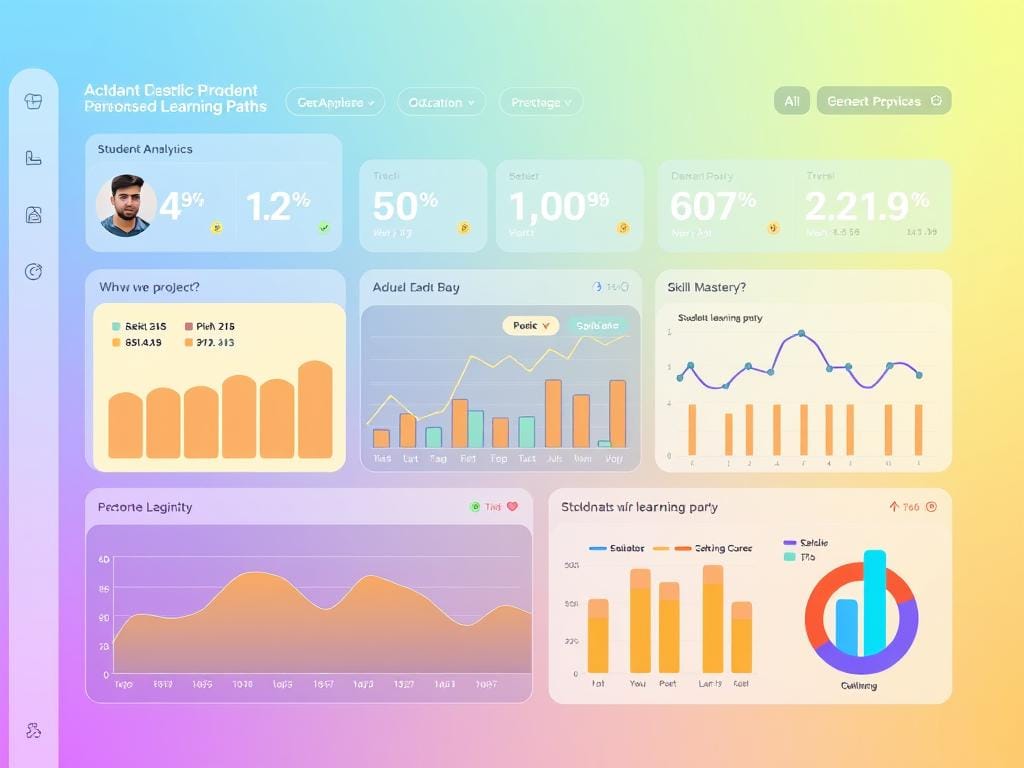
AI algorithms create personalized learning paths based on individual student performance data
Automated Grading Systems
One of the most time-consuming aspects of teaching is grading assignments and providing feedback. AI in education has revolutionized this process through automated grading systems that can evaluate multiple-choice questions, mathematical problems, and increasingly, written responses.
Tools like Gradescope use machine learning to assess student work with remarkable consistency and objectivity. These systems not only save educators valuable time but also provide students with immediate feedback, which research shows is crucial for effective learning. According to a 2022 study, teachers using AI grading tools reported saving an average of 6 hours per week—time they could redirect to more meaningful instructional activities.
AI-Driven Tutoring Platforms
Intelligent tutoring systems represent one of the most promising applications of AI in education. These platforms simulate one-on-one instruction, providing personalized guidance and support to students outside traditional classroom hours.
AI tutors can identify knowledge gaps, offer tailored explanations, and adapt their teaching approach based on how students respond to different types of instruction. Unlike human tutors, these systems are available 24/7 and can work with unlimited numbers of students simultaneously, democratizing access to personalized educational support.

AI tutoring systems provide personalized support and immediate feedback to students
Administrative Task Automation
Beyond direct educational applications, AI is transforming school administration by automating routine tasks that traditionally consume significant staff time. From scheduling and resource allocation to attendance tracking and report generation, AI systems are streamlining operations across educational institutions.
School administrators using AI tools report being able to redirect their focus from paperwork to more strategic initiatives, including curriculum development, teacher support, and student engagement. This efficiency gain is particularly valuable for resource-constrained schools where administrative staff often wear multiple hats.
Real-World Examples of AI in Education
To understand the practical impact of AI in education, let’s examine three successful implementations that demonstrate how these technologies are being applied in real educational settings:
Case Study 1: Carnegie Learning’s MATHia Platform
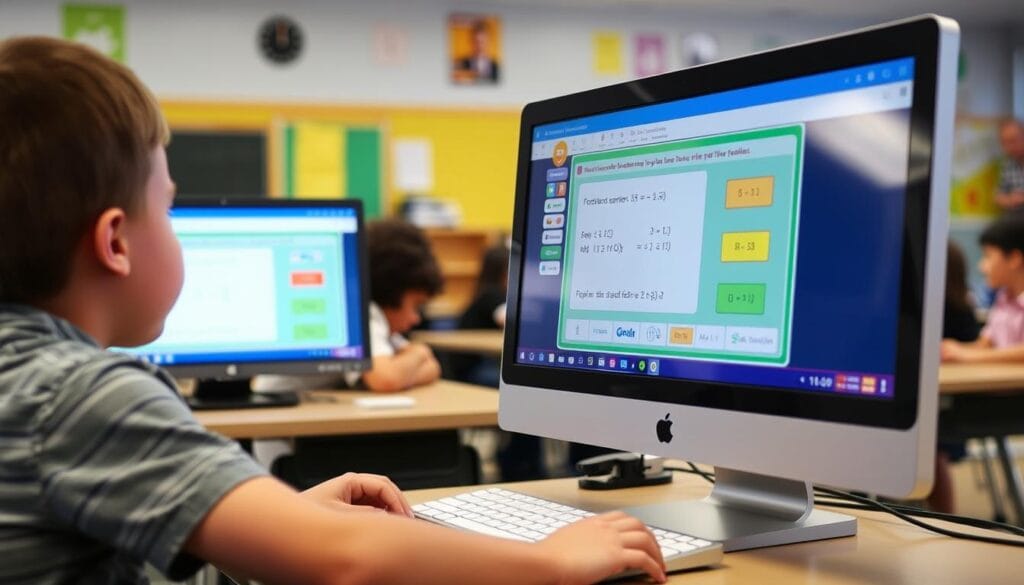
Carnegie Learning’s MATHia provides personalized math instruction through AI
Carnegie Learning’s MATHia represents one of the most sophisticated applications of AI in mathematics education. This intelligent tutoring system uses cognitive science principles and AI algorithms to deliver personalized math instruction to middle and high school students.
MATHia continuously analyzes student performance data to identify knowledge gaps and misconceptions. It then adapts instruction in real-time, providing additional practice in areas where students struggle and accelerating through content they’ve already mastered. The platform also gives teachers detailed insights into student progress, allowing for more targeted classroom instruction.
A 2021 study involving 17,000 students across 147 schools found that those using MATHia showed 27% better growth in mathematical achievement compared to students using traditional instructional methods. The system’s success demonstrates how AI can effectively personalize learning at scale.
Case Study 2: Duolingo’s AI Language Tutors

Duolingo uses AI to personalize language learning experiences
Duolingo has revolutionized language learning through its AI-powered platform that adapts to each learner’s abilities and learning style. The app uses sophisticated algorithms to analyze user responses and customize lesson difficulty, vocabulary introduction, and review frequency.
The platform’s AI engine identifies patterns in user mistakes to target specific areas of difficulty. For example, if a Spanish learner consistently struggles with verb conjugation, the system will provide additional practice in this area while maintaining an appropriate overall difficulty level to keep the learner engaged.
With over 500 million registered users worldwide, Duolingo demonstrates how AI can make quality education more accessible. The company reports that 34 hours on their platform is equivalent to a semester of university-level language instruction—a testament to the efficiency of their AI-driven approach.
Case Study 3: Georgia State University’s AI Advising System
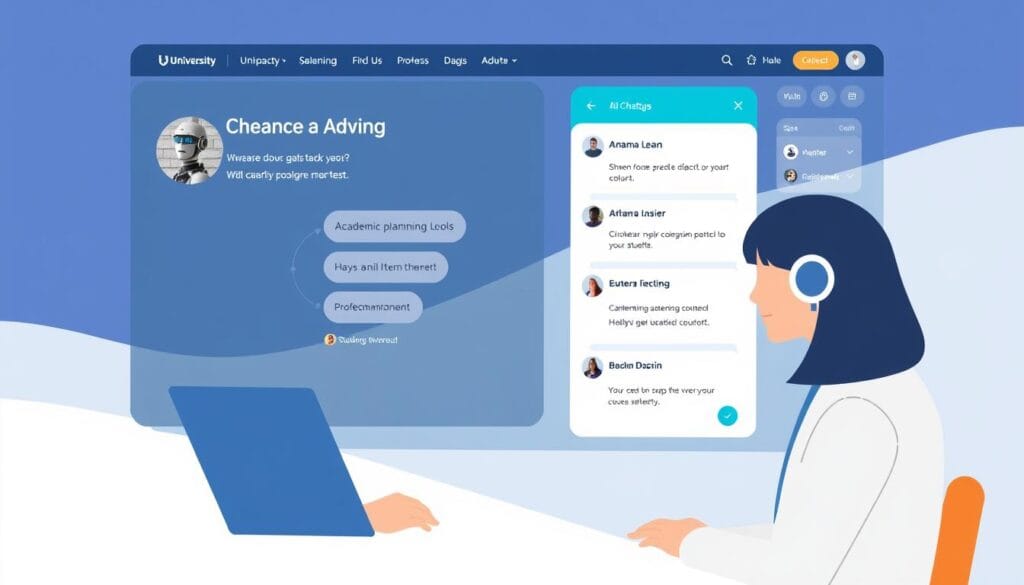
Georgia State’s AI advising system helps students navigate academic decisions
Georgia State University implemented an AI-powered advising system called “Pounce” to address the challenge of providing timely support to its large and diverse student population. This chatbot system answers student questions about enrollment, financial aid, and course selection 24/7, handling over 200,000 queries per semester.
The system also proactively identifies students at risk of academic difficulties by analyzing patterns in attendance, grades, and engagement. When concerning patterns emerge, the system alerts human advisors who can intervene with targeted support.
Since implementing this AI system, Georgia State has increased its graduation rate by 6 percentage points and eliminated achievement gaps based on race, ethnicity, and socioeconomic status. This case demonstrates how AI can support educational equity by ensuring all students receive timely guidance and support.
Stay Ahead of EdTech Trends
Want to learn more about implementing AI in your educational setting? Our comprehensive guide covers everything from getting started to advanced applications.
Download Free AI in Education GuideEthical Considerations for AI in Education
While the potential benefits of AI in education are substantial, responsible implementation requires careful consideration of several ethical dimensions:
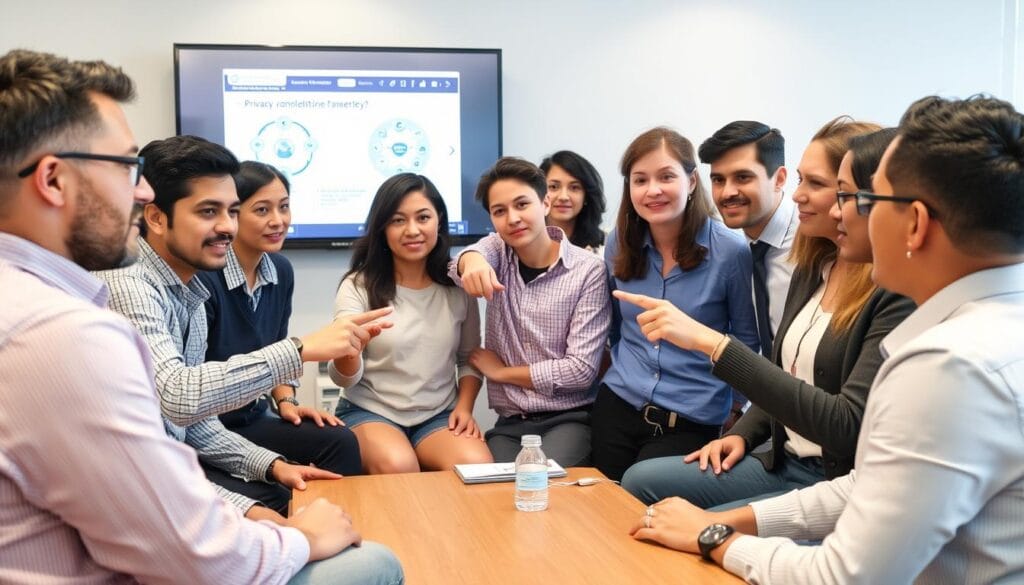
Educators must carefully consider ethical implications when implementing AI technologies
Data Privacy and Security
AI systems in education collect and analyze vast amounts of student data, raising important questions about privacy and security. Educational institutions must implement robust safeguards to protect sensitive information and ensure compliance with regulations like FERPA in the United States and GDPR in Europe.
Transparency about data collection practices is essential, with clear policies regarding what information is gathered, how it’s used, and who has access. Students and parents should have the ability to access their data and understand how AI systems are using it to make educational recommendations.
“The most critical challenge for AI in education isn’t technological—it’s ethical. We must ensure these powerful tools serve educational goals while respecting student privacy and promoting equity.”
— Dr. Rose Luckin, Professor of Learner-Centred Design, University College London
Algorithmic Bias and Fairness
AI systems learn from existing data, which means they can perpetuate or amplify biases present in that data. In educational contexts, this could lead to unfair treatment of certain student groups or reinforcement of existing inequalities.
Developers and educators must work together to identify and mitigate potential biases in AI educational tools. This includes diverse representation in development teams, rigorous testing across different student populations, and ongoing monitoring of system outputs for signs of bias.

Detecting and addressing algorithmic bias is crucial for equitable AI in education
Human-AI Collaboration
The most effective implementations of AI in education position these technologies as tools to enhance human teaching rather than replace it. The unique capabilities of human educators—including emotional intelligence, ethical reasoning, and creative problem-solving—remain essential to quality education.
Educational institutions should develop frameworks for effective human-AI collaboration that leverage the strengths of both. This includes training for educators on how to work with AI systems and clear guidelines about when human judgment should override algorithmic recommendations.
The Future of AI in Education
As artificial intelligence continues to evolve, several emerging trends point to how these technologies might further transform education in the coming years:

VR/AI hybrid classrooms represent one potential future for educational technology
VR/AI Hybrid Learning Environments
The integration of virtual reality with artificial intelligence promises to create immersive learning environments that adapt in real-time to student needs. These systems could allow students to explore historical events, conduct virtual science experiments, or practice skills in realistic simulations with AI-powered guidance.
Early research suggests that VR/AI hybrid learning can significantly increase student engagement and knowledge retention. As these technologies become more affordable and accessible, they could fundamentally change how we approach experiential learning in education.
Emotion-Sensing AI
Emerging AI technologies can detect emotional states through facial expressions, voice patterns, and other behavioral cues. In educational contexts, these systems could help identify when students are confused, frustrated, or disengaged, allowing for timely intervention.
While promising, emotion-sensing AI raises important privacy considerations and requires careful implementation with appropriate consent and transparency. When thoughtfully deployed, these technologies could help create more responsive and supportive learning environments.

Emotion-sensing AI could help educators identify and address student engagement issues
AI-Enabled Collaborative Learning
Future AI systems may facilitate more effective collaborative learning by analyzing group dynamics, identifying optimal team compositions, and providing real-time guidance to improve collaboration. These tools could help students develop crucial teamwork skills while ensuring more productive group work experiences.
As remote and hybrid learning models become more common, AI-enabled collaborative platforms will likely play an increasingly important role in facilitating meaningful student interaction across physical distances.
Transform Your Educational Approach
Ready to implement AI solutions in your classroom or institution? Our comprehensive implementation roadmap provides step-by-step guidance for educators at all levels.
Get Your AI Implementation RoadmapBalancing Innovation and Responsibility in Educational AI
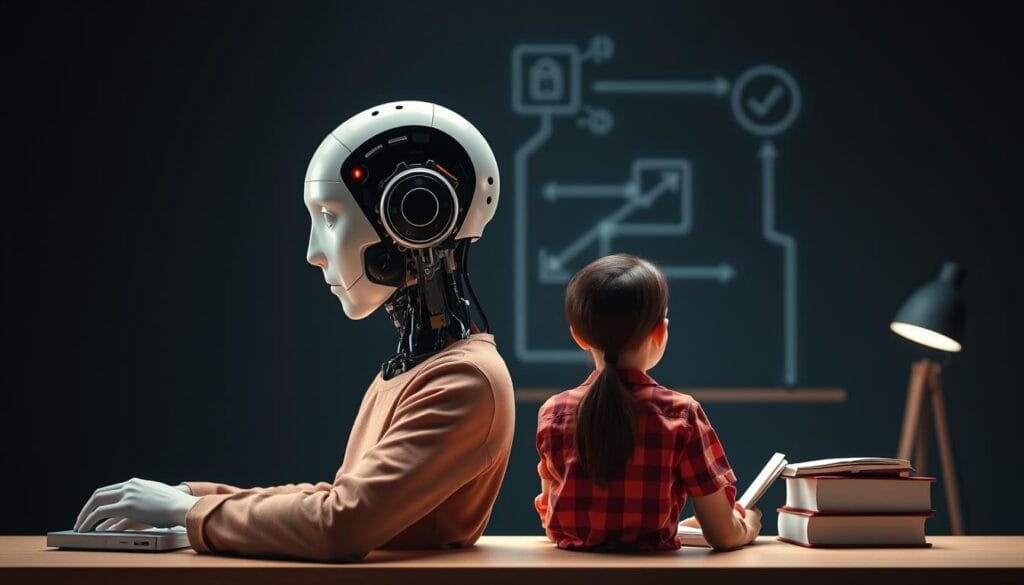
The future of education lies in balancing technological innovation with human connection
Artificial intelligence is undeniably transforming education, offering unprecedented opportunities to personalize learning, automate routine tasks, and provide insights that were previously impossible to obtain. The examples and case studies discussed demonstrate that AI in education is no longer just theoretical—it’s already making a significant impact in classrooms and institutions worldwide.
However, the responsible implementation of these powerful technologies requires thoughtful consideration of ethical implications, including data privacy, algorithmic fairness, and the appropriate balance between AI and human instruction. Educational institutions must develop comprehensive frameworks that harness the benefits of AI while mitigating potential risks.
As we look to the future, the most promising path forward lies not in choosing between traditional teaching methods and AI-powered approaches, but in finding the optimal integration of both. By combining the efficiency and scalability of artificial intelligence with the irreplaceable human elements of education—empathy, inspiration, and ethical guidance—we can create learning environments that truly prepare students for success in an increasingly complex world.
The journey toward AI-enhanced education is just beginning, and educators, technologists, policymakers, and students all have important roles to play in shaping this transformation. By approaching these changes with both enthusiasm for innovation and commitment to educational values, we can ensure that AI serves as a powerful tool for expanding educational opportunities and improving outcomes for all learners.
Stay Informed About AI in Education
Subscribe to our newsletter for the latest research, case studies, and best practices for implementing AI in educational settings.
Subscribe to EdTech AI Updates




